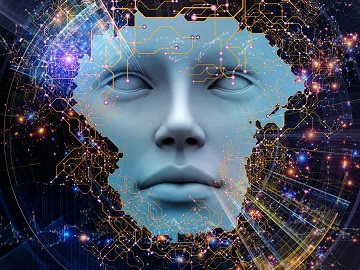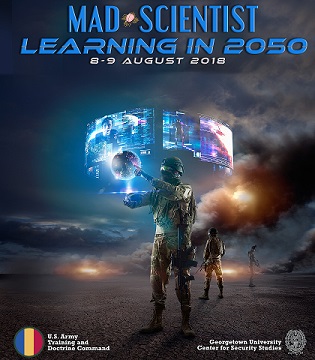 [Editor’s Note: At the Mad Scientist Learning in 2050 Conference with Georgetown University’s Center for Security Studies in Washington, DC, Leading scientists, innovators, and scholars gathered to discuss how humans will receive, process, and integrate information in the future. The convergence of technology, the speed of change, the generational differences of new Recruits, and the uncertainty of the Future Operational Environment will dramatically alter the way Soldiers and Leaders learn in 2050. One clear signal generated from this conference is that learning in the future will be personalized, continuous, and accelerated.]
[Editor’s Note: At the Mad Scientist Learning in 2050 Conference with Georgetown University’s Center for Security Studies in Washington, DC, Leading scientists, innovators, and scholars gathered to discuss how humans will receive, process, and integrate information in the future. The convergence of technology, the speed of change, the generational differences of new Recruits, and the uncertainty of the Future Operational Environment will dramatically alter the way Soldiers and Leaders learn in 2050. One clear signal generated from this conference is that learning in the future will be personalized, continuous, and accelerated.]
Personalized Learning
“The principal consequence of individual differences is that every general law of teaching has to be applied with consideration of the particular person.” – E.L. Thorndike (1906)
 The world is becoming increasingly personalized, and individual choice and preference drives much of daily life, from commerce, to transportation, to entertainment. For example, your Amazon account today can keep your payment information on file (one click away), suggest new products based on your purchase history, and allow you to shop from anywhere and ship to any place, all while tracking your purchase every step of the way, including providing photographic proof of delivery. Online retailers, personal transportation services, and streaming content providers track and maintain an unprecedented amount of specific individual information to deliver a detailed and personalized experience for the consumer.
The world is becoming increasingly personalized, and individual choice and preference drives much of daily life, from commerce, to transportation, to entertainment. For example, your Amazon account today can keep your payment information on file (one click away), suggest new products based on your purchase history, and allow you to shop from anywhere and ship to any place, all while tracking your purchase every step of the way, including providing photographic proof of delivery. Online retailers, personal transportation services, and streaming content providers track and maintain an unprecedented amount of specific individual information to deliver a detailed and personalized experience for the consumer.
There is an opportunity to improve the effectiveness in targeted areas of learning – skills training, foundational learning, and functional training, for example – if learning institutions and organizations, as well as learners, follow the path of personalization set by commerce, transportation, and entertainment.1 This necessitates an institutional shift in the way we educate Soldiers. Instead of training being administered based on rank or pre-determined schedule, it is conducted based on need, temporally optimized for maximum absorption and retention, in a style that matches the learner, and implemented on the battlefield, if needed.
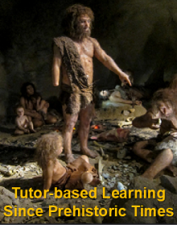 An important facet of personalized learning is personal attention to the learner. Tutors have been used in education for 60,000 years.2 However, they always have been limited to how many educators could devote their attention to one student. With advancements in AI, intelligent tutors could reduce the cost and manpower requirements associated with one-on-one instructor to student ratios.
An important facet of personalized learning is personal attention to the learner. Tutors have been used in education for 60,000 years.2 However, they always have been limited to how many educators could devote their attention to one student. With advancements in AI, intelligent tutors could reduce the cost and manpower requirements associated with one-on-one instructor to student ratios. 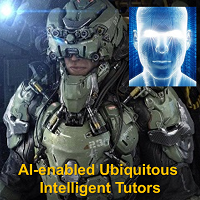 Research indicates that students who have access to tutors as opposed to exclusive classroom instruction were more effective learners as seen in the chart below. In other words, the average tutored student performed better than 98 percent of the students in the traditional classroom.3 What was a problem of scale in the past – cost, manpower, time – can be alleviated in the future through the use of AI-enabled ubiquitous intelligent tutors.
Research indicates that students who have access to tutors as opposed to exclusive classroom instruction were more effective learners as seen in the chart below. In other words, the average tutored student performed better than 98 percent of the students in the traditional classroom.3 What was a problem of scale in the past – cost, manpower, time – can be alleviated in the future through the use of AI-enabled ubiquitous intelligent tutors.

Another aspect of personalized learning is the diminishing importance of geo-location. Education, in general, has traditionally been executed in a “brick and mortar” setting. The students, learners, or trainees physically travel to the location of the teacher, expert, or trainer in order for knowledge to be imparted. Historically, this was the only viable option. However, a hyper-connected world with enabling technologies like virtual and augmented reality; high-bandwidth networks with low latency; high fidelity modeling, 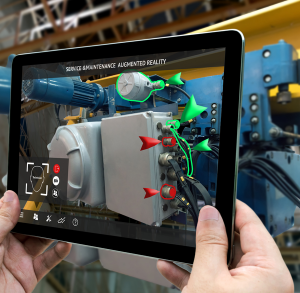 simulations, and video; and universal interfaces reduces or eliminates the necessity for physical co-location. This allows Soldiers to attend courses hosted virtually anywhere, participate in combined arms and Joint exercises globally, and experience a variety of austere and otherwise inaccessible environments through virtual and augmented reality.4
simulations, and video; and universal interfaces reduces or eliminates the necessity for physical co-location. This allows Soldiers to attend courses hosted virtually anywhere, participate in combined arms and Joint exercises globally, and experience a variety of austere and otherwise inaccessible environments through virtual and augmented reality.4
Based on these trends and emerging opportunities to increase efficiency, the Army may have to re-evaluate its educational and training frameworks and traditional operational practices to adjust for more individualized and personalized learning styles. When personalized learning is optimized, Soldiers could become more lethal, specially skilled, and decisive along a shorter timeline, using lesser budget resources, and with reduced manpower.
Continuous Learning
Continuous learning, or the process of repeatedly engaging in activities designed to learn new information or skills, is a natural process that will remain necessary for Soldiers and Leaders in 2050. The future workforce will define and drive when, where, and how learning takes place. Continuous learning has the advantage of allowing humans to learn from past mistakes and understand biases by “working the problem” – assessing and fixing biases, actively changing behavior to offset biases, moving on to decision-making, and then returning to work the problem again for further solutions. 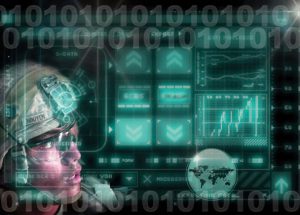 Learners must be given the chance to fail, and failure must be built in to the continuous learning process so that the learner not only arrives at the solution organically, but practices critical thinking and evaluation skills.5
Learners must be given the chance to fail, and failure must be built in to the continuous learning process so that the learner not only arrives at the solution organically, but practices critical thinking and evaluation skills.5
There are costs and caveats to successful continuous learning. After a skill is learned, it must be continually practiced and maintained. Amy Titus explained how skills perish after 3-5 years unless they are updated to meet present needs and circumstances. In an environment of rapidly changing technology and situational dynamics, keeping skills up to date must be a conscious and nonstop process. One of the major obstacles to continuous learning is that learning is work and requires a measure of self-motivation to execute. Learners only effectively learn if they are curious, so learning to pass a class or check a box does not yield the same result as genuine interest in the subject.6 New approaches such as gamification and experiential learning can help mitigate some of these limitations.
Accelerated Learning
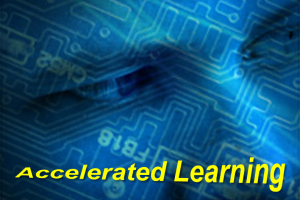 The concept of accelerated learning, or using a compressed timeline and various approaches, methodologies, or technological means to maximize learning, opens up several questions: what kinds of technologies accelerate learning, and how does technology accelerate learning? Technologies useful for accelerated learning include the immersive reality spectrum – virtual reality/augmented reality (mixed reality) and haptic feedback – as well as wearables, neural stimulation, and brain mapping. These technologies and devices enable the individualization and personalization of learning. Individualization allows the learner to identify their strengths and weaknesses in learning, retaining, and applying information and provides a program structured to capitalize on his/her naturally favored learning style to maximize the amount and depth of information presented in the most time and cost-effective manner.
The concept of accelerated learning, or using a compressed timeline and various approaches, methodologies, or technological means to maximize learning, opens up several questions: what kinds of technologies accelerate learning, and how does technology accelerate learning? Technologies useful for accelerated learning include the immersive reality spectrum – virtual reality/augmented reality (mixed reality) and haptic feedback – as well as wearables, neural stimulation, and brain mapping. These technologies and devices enable the individualization and personalization of learning. Individualization allows the learner to identify their strengths and weaknesses in learning, retaining, and applying information and provides a program structured to capitalize on his/her naturally favored learning style to maximize the amount and depth of information presented in the most time and cost-effective manner.
Digital learning platforms are important tools for the tracking of a Soldier’s progress. This tool not only delivers individualized progress reports to superiors and instructors, but also allows the learner to remain up to date regardless of their physical location. Intelligent tutors may be integrated into a 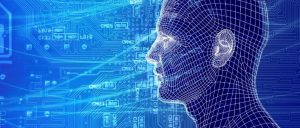 digital learning platform, providing real-time, individual feedback and suggesting areas for improvement or those in need of increased attention. Intelligent tutors and other technologies utilized in the accelerated learning process, such as augmented reality, can be readily adapted to a variety of situations conforming to the needs of a specific unit or mission.
digital learning platform, providing real-time, individual feedback and suggesting areas for improvement or those in need of increased attention. Intelligent tutors and other technologies utilized in the accelerated learning process, such as augmented reality, can be readily adapted to a variety of situations conforming to the needs of a specific unit or mission.
Besides external methods of accelerated learning, there are also biological techniques to increase the speed and accuracy of learning new skills. DARPA scientist Dr. Tristan McClure-Begley introduced Targeted Neuroplasticity Training (TNT), whereby the peripheral nervous system is artificially stimulated resulting in the rapid acquisition of a specific skill. Soldiers can learn movements and retain that muscle memory faster than the time it would take to complete many sets of repetitions by pairing nerve stimulation with the performance of a physical action.
 Accelerated learning does not guarantee positive outcomes. There is a high initial startup cost to producing mixed, augmented, and virtual reality training programs, and these programs require massive amounts of data and inputs for the most realistic product.7 There are questions about the longevity and quality of retention when learning is delivered through accelerated means. About 40 percent of information that humans receive is forgotten after 20 minutes and another 40 percent is lost after 30 days if it is not reinforced.8
Accelerated learning does not guarantee positive outcomes. There is a high initial startup cost to producing mixed, augmented, and virtual reality training programs, and these programs require massive amounts of data and inputs for the most realistic product.7 There are questions about the longevity and quality of retention when learning is delivered through accelerated means. About 40 percent of information that humans receive is forgotten after 20 minutes and another 40 percent is lost after 30 days if it is not reinforced.8
Most learners attribute mastery of a skill to practical application and not formal training programs.9 TNT attempts to mitigate this factor by allowing for multiple physical repetitions to be administered quickly. But this technique must be correctly administered, or psychological and physiological pairing may not occur correctly or occur between the wrong stimuli, creating maladaptive plasticity, which is training the wrong behavior.
 An increased emphasis on continuous and accelerated learning could present the Army with an opportunity to have Soldiers that are lifelong learners capable of quickly picking up emerging required skills and knowledge. However, this focus would need to account for peak learner interest and long-term viability.
An increased emphasis on continuous and accelerated learning could present the Army with an opportunity to have Soldiers that are lifelong learners capable of quickly picking up emerging required skills and knowledge. However, this focus would need to account for peak learner interest and long-term viability.
If you enjoyed this post, please also watch Dr. Dexter Fletcher‘s video presentation on Digital Mentors and Tutors and Dr. Tristan McClure-Begley‘s presentation on Targeted Neuroplasticity Training from of the Mad Scientist Learning in 2050 Conference …
… see the following related blog posts:
… and read The Mad Scientist Learning in 2050 Conference Final Report.
1 Smith-Lewis, Andrew, Mad Scientist Conference: Learning in 2050, Georgetown University, 8 August 2018
2 Fletcher, Dexter, Mad Scientist Conference: Learning in 2050, Georgetown University, 8 August 2018
3 https://www.edsurge.com/news/2014-08-10-personalization-and-the-2-sigma-problem
4 Titus, Amy, Mad Scientist Conference: Learning in 2050, Georgetown University, 8 August 2018
5 Taylor, Christopher, Mad Scientist Conference: Learning in 2050, Georgetown University, 9 August 2018
6 Masie, Elliott, Mad Scientist Conference: Learning in 2050, Georgetown University, 8 August 2018
7 Hill, Randall, Mad Scientist Conference: Learning in 2050, Georgetown University, 9 August 2018
8 Goodwin, Gregory, Mad Scientist Conference: Learning in 2050, Georgetown University, 8 August 2018
9 Masie, Elliott, Mad Scientist Conference: Learning in 2050, Georgetown University, 8 August 2018

